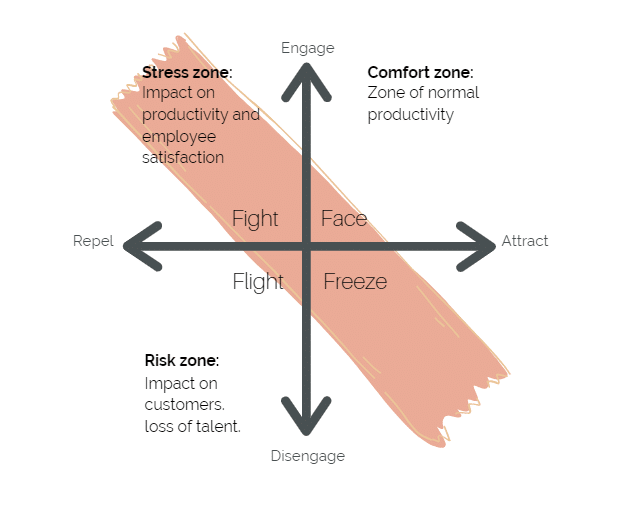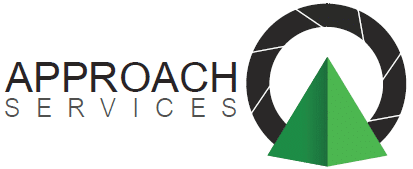Introduction to conflict and resistance
Topic time estimate: 5 Minutes

Let’s look at this game. Both participants assume the starting position with hands locked and both elbows on the table.
The players are told, that they will earn $1 for every time the back of their partner’s hand touches the table. They have 30 seconds to get as much money as they can.
How many dollars do you think they will get?
- 0 dollars
- 1-5 dollars
- 6-20 dollars
- More than 20 dollars
Definitions
Conflicts are the incompatibility of goals based on different values, beliefs, attitudes, and behaviours.
Resistance to change is the conscious or unconscious attempt to prevent something by action or argument.
Resistance managers are the senior leaders, middle managers, and frontline supervisors that mitigate resistance and facilitate changes smoothly.
The 4F model
Video time estimate: 4 Minutes
At Approach Services, we use the 4F model to explain organisational and individual change, reactions, and impacts. Changes are often met with resistance and fight, flight, freeze reactions. Individuals that fight and freeze under uncertainty experience high levels of stress. A change leader plays an important role in highlighting resistance, concerns and potentials for conflicts early to the change leaders. This enables change leaders to guide their teams through the 4F model.

Watch this video to understand the 4F model.
Reflection
Take a minute to acknowledge why and how you landed on your answer for the poll above, then have a look at what other’s thought:
Assumptions cause conflict
It is quite difficult to overcome assumptions.
A common assumption is that more for one person means less for the other. If you chose 0 or 1-5 points, you probably assumed that more points for player A means less for player B. This Win-Lose assumption naturally leads to resistance and conflict.
On the contrary, if you chose 20+ you might have assumed abundance and that the players would attempt to resolve the perceived conflict through communication and collaboration with trust. They might have agreed to completely trust one another and tap the back of one hand for 15 seconds then the back of the other for another 15 or extended a little trust by flip-flopping between both sides. This activity exemplified a situation where conflict resolution could have led to a better outcome for everyone.
If you consider your reasoning, you might have thought:
- I’ve seen this game before
- I know how this game is played
- There is no communication
- They have to keep their hands together
- They don’t trust each other
- etc.
You can relate these statements to typical reactions to change:
- I’ve seen how change is managed in this organisation
- I know how this will play out… I will be the looser…
- We won’t receive a truthful answer from the management
- We have to keep our heads down so we don’t lose our jobs
- We don’t trust the employees / the management
- etc.
Do these statements sound familiar?
